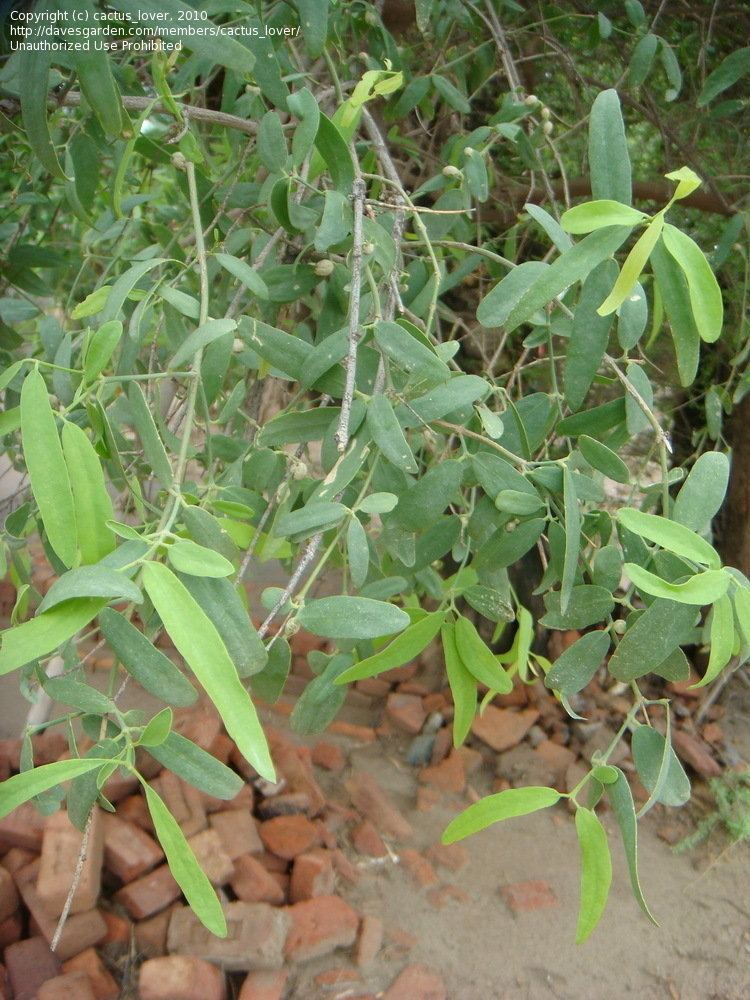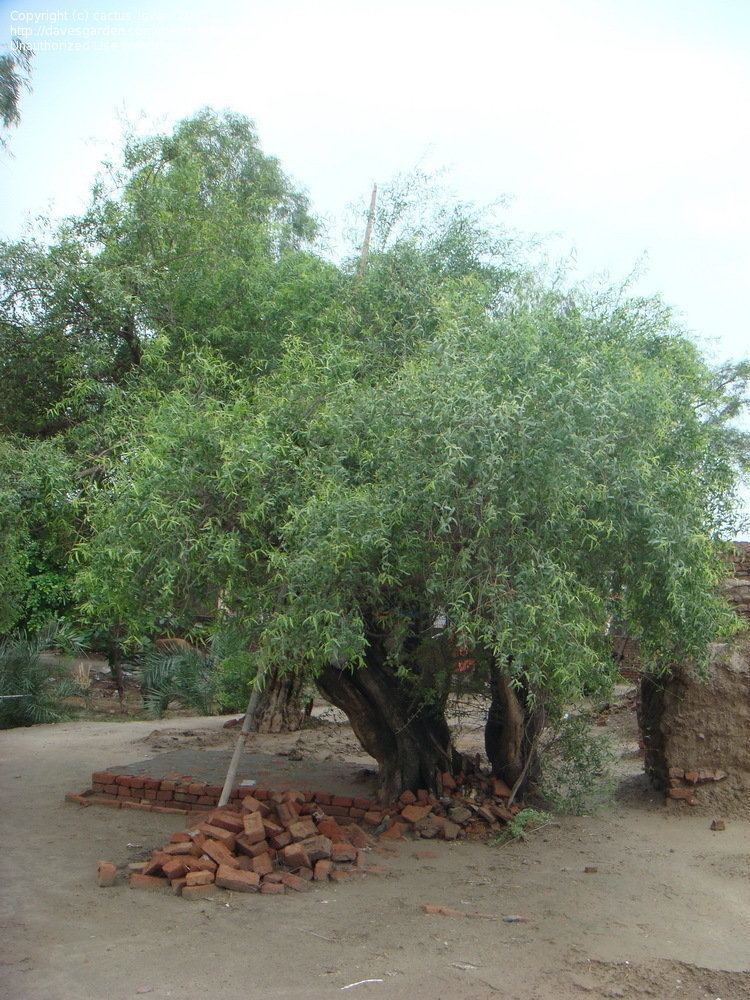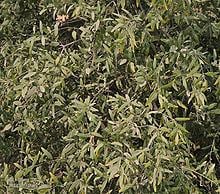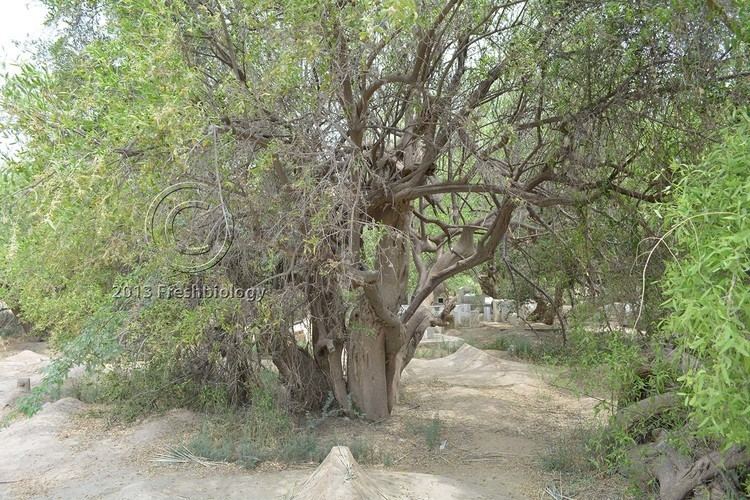Kingdom Plantae Family Salvadoraceae Scientific name Salvadora oleiodes | Order Brassicales Genus Salvadora Rank Species | |
 | ||
Similar Salvadora, Salvadoraceae, Capparis decidua, Salvadora persica, Prosopis cineraria | ||
Salvadora oleiodes is a small bushy evergreen tree found in India and Pakistan and southern Iran. In Iran it is called Tuch (توچ). Common names in Indian subcontinent include Vann, ون/ਵਣ (vaṇ) (Punjabi), जाल / पीलू (jāl / pīlū) (Hindi), and (Sindhi: ڄار (jār)).
Contents

Description

It is a small tree with drooping branches, rarely with proper bole or exceeding a height of 20 feet and a girth of 3 feet. It is very common plant in arid tracts but becomes scarce where rainfall conditions are better. It can withstand great soil salinity. It produces new leaves during April, which on maturity become thick and leathery.

The tree coppices fairly well but regenerates freely by root suckers and natural layering. It is, however, very slow growing but a dense growth is often formed around the parent plant by root suckers and some natural seedlings. The plant provides a dense shade. It is often lopped for camel and goat fodder.
Fruit

Small greenish white flowers are produced in March-April. The fruit is yellow and ripens in the months of May and June. It forms one of the main grazing sources for livestock owned by local farmers. It is often dried and preserved in large quantities. The seeds are spread by birds. The seedlings come up under the parent plant or under other bushes and are somewhat frost-tender.
Habitat
The vann is commonly found in and around Sandal Bar, and is reserved for use as grazing sources for local peasant villages. In addition, a number of trees have been preserved to provide shade for cattle.
Wood
The vann is mostly non-woody and the small amount of wood that it has is soft, light, and not particularly useful for any of wood's normal uses, notably building and heat. When burnt, it leaves a large quantity of ash, which can then be boiled down into a substance for treating mange in camels.
Pilu tree in Mahabharata
The Mahabharata Book VIII: Karna Parva, Chapter 30, verse 24 mentions tree species as Sami, Pilu and Karir tree species as under in Sanskrit and IAST:
शमी पीलु करीराणां वनेषु सुखवर्त्मसु (śamī pīlu karīrāṇāṃ vaneṣu sukhavartmasu) अपूपान सक्तु पिण्डीश च खाथन्तॊ मदितान्विताः (apūpān saktu piṇḍīś ca khādanto mathitānvitāḥ) Meaning - "When shall I be amongst those ladies eating cakes of flour and meat and balls of pounded barley mixed with skimmed milk, in the forests, having many pleasant paths of Sami and Pilu and Karira!" (VIII.30.24)